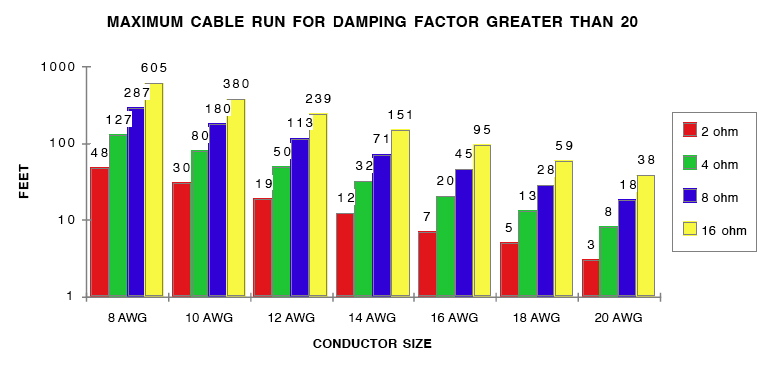
What other cable problems affect performance?
The twin gremlins covered in “Understanding the Microphone Cable,” namely series inductance and skin effect, are also factors in loudspeaker cables.
Series inductance and the resulting inductive reactance adds to the DC resistance, increasing the AC impedance of the cable. An inductor can be thought of as a resistor whose resistance increases as frequency increases.
Thus, series inductance has a low-pass filter characteristic, progressively attenuating high frequencies. The inductance of a round conductor is largely independent of its diameter or gauge, and is not directly proportional to its length, either.
Skin effect is a phenomenon that causes current flow in a round conductor to be concentrated more to the surface of the conductor at higher frequencies, almost as if it were a hollow tube. This increases the apparent resistance of the conductor at high frequencies, and also brings significant phase shift.
Taken together, these ugly realities introduce various dynamic and time-related forms of signal distortion which are very difficult to quantify with simple sine-wave measurements. When complex waveforms have their harmonic structures altered, the sense of immediacy and realism is reduced.
The ear/brain combination is incredibly sensitive to the effects of this type of phase distortion, but generally needs direct, A/B comparisons in real time to recognize them.
How can these problems be addressed?
The number of strange designs for loudspeaker cable is amazing. Among them are coaxial, with two insulated spiral “shields” serving as conductors; quad, using two conductors for “positive” and two for “negative”; zipcord with ultra-fine “rope lay” conductors and transparent jacket; multi-conductor, allegedly using large conductors for lows, medium conductors for mids, and tiny conductors for highs; 4 AWG welding cable; braided flat cable constructed of many individually insulated conductors; and many others.
Most of these address the inductance question by using multiple conductors and the skin effect problem by keeping them relatively small.
Many of these “esoteric” cables are extraordinarily expensive; all of them probably offer some improvement in performance over ordinary twisted-pair type cables, especially in critical monitoring applications and high-quality music systems.
In most cases, the cost of such cable and its termination, combined with the extremely fragile construction common to them, severely limits their practical use, especially in portable situations.
In short, they cost too much, they’re too hard to work with, and they just aren’t made for rough treatment. But, sonically, they all bear listening to with an open mind; the differences can be surprisingly apparent.

